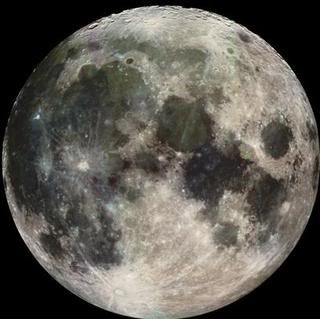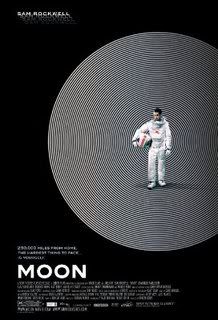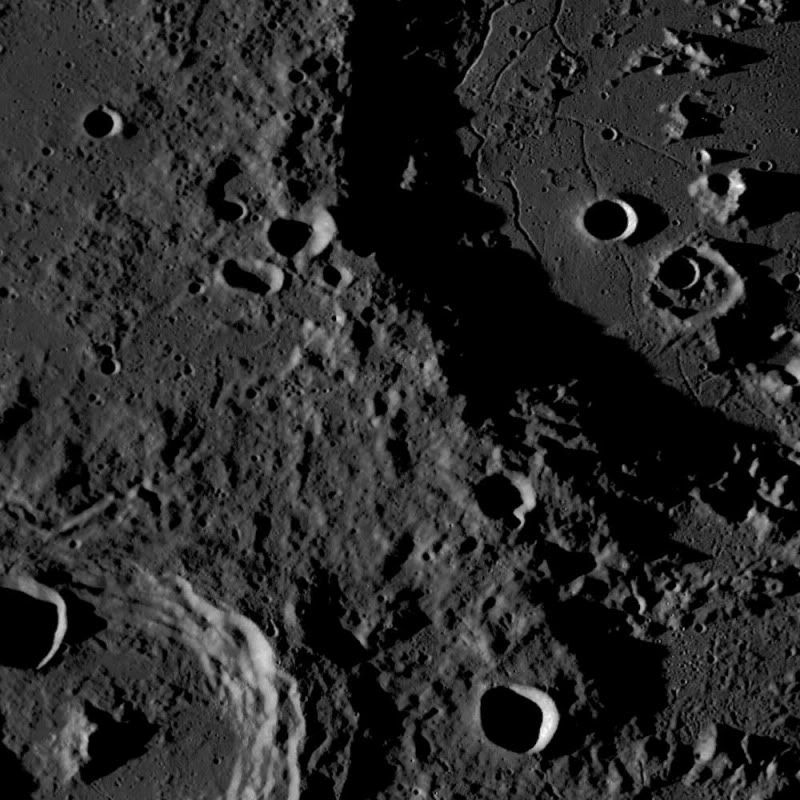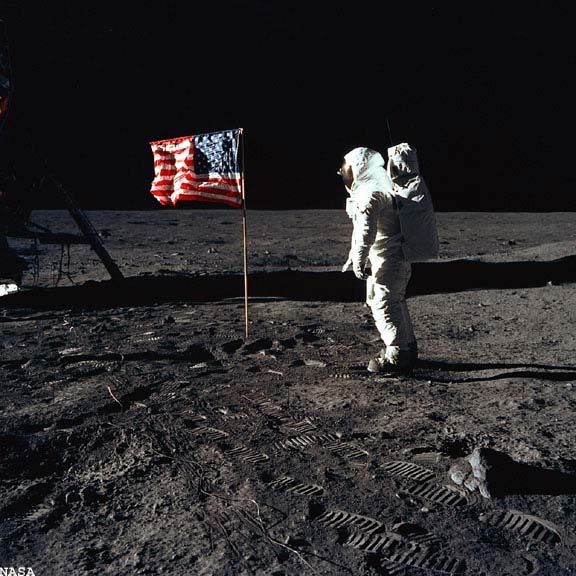
What is it with Hollywood releasing movies that coincide with NASA missions to outer space? Remember when Star Trek came out during the Hubble Telescope repair mission [read ScriptPhD coverage]? Moon, a thoughtful new science fiction indie feature from Liberty Films and Sony Pictures, featuring a near-solo bravura performance by Sam Rockwell, comes on the auspicious heels of NASA’s Lunar Reconnaisance Orbiter mission to remap and fortify our knowledge of Earth’s Moon and surrounding solar system that got off to a spectacular start on June 18th. ScriptPhD.com reviews Moon and discusses the LRO mission, along with some of the first days-old high-resolution topographical beamed moon images and their implications for further lunar missions. To read the article, click “continue reading”.
REVIEW: Moon
ScriptPhD Grade: B

In the not-so-distant future, the Earth’s energy crisis is rendered obsolete. A megacorporation named Lunar Industries has found an innovative way to collect He3 from the Sun on lunar mining bases. Harvested much in the way we currently drill for oil, the energy is packed onto mini-rocket transporters, which are then fired back to Earth to provide for 70% of our planet’s energy needs. The mining station Sarang is manned by astronaut Sam Bell (Sam Rockwell) as part of a three-year solo mission. Sam leads a banal, isolated life on the station. Between Helium harvest runs in his Moon Jeep, he occupies his time with botany, builds miniature houses, performs calisthenics, and talks to himself. His only reminders from home are video messages from his wife, Tess and baby daughter Eve, and his sole companion on the moon is GERTIE, a Hal-esque robotic assistance machine (the surprising voice of Kevin Spacey). But Sam’s mission is a noble one. He is performing a duty to his country, and the only thing standing between Sam and his sanity is that his mission is two weeks from completion.
It soon becomes apparent that something about this mission is very, very askew. Sam’s brain appears to be deteriorating under the stress of the isolation he is experiencing—he sees visions of his wife and mysterious voices taunt him throughout the ship’s living quarters. During a drive to the lunar He3 harvesting station, a strange vision leads to an accident. He wakes up in a sterile makeshift hospital to GERTIE’s palliative reassurance, but something is wrong. Secret hushed conversations between GERTIE and base control and prevention of leaving the base or his hospital bed lead Sam back to the accident site only to discover that it was no accident at all. Trapped inside the truck is his very own body double! Forming an unlikely friendship in their quest for the truth, the two Sams discover a corporate conspiracy back on Earth—they are clones of the original Sam Bell. A secret room full of “Sam” clones rests below the module’s cryogenic transporter. Tess, Sam’s wife, is long dead, and his daughter a grown woman. Recycled memories are implanted into awakened clones as a mental training regimen. As one clone’s body atrophies graphically, coinciding with the appearance of mission control to reawaken another, the two avatars must make important choices to allow one freedom back on Earth.
Moon is, above all else, a space drama that explores several universal thematic questions. What is the value of a human life? The “Sam” modules have inherent feelings, memories (albeit implanted), desires and want for freedom. Additionally, what are the boundaries of loneliness and isolation that a human being, even a clone, can tolerate under extreme conditions? In an emotionally impactful moment during the film, Original Sam Clone reaches out to his avatar to shake his hand. “I’m lonely, man,” he says. “I’ve been here all alone for three years and I just want to shake your hand.” The storyline also weaves in a covert repudiation of corporate greed and hegemony, even for the sake of “doing good for mankind”. Lunar Industries explicitly conspires in the hijacking of a man’s life and participates in a cover-up to maximize profit from a beneficial technology. Is there ever a circumstance that warrants such moral opprobrium? The film argues there is not.
As a film, Moon encounters a number of problems in its attempt to unfold an ambitious plot. The core storyline is way too slow to develop. The Sam clone isn’t introduced until solidly into the second half of the movie, negating an opportunity to enhance that part of the plot. To that extent, the movie glosses over some pretty superficial treatment of both the relationships between the Sams, as well as that of Sam and his computerized caretaker GERTIE. The film’s ultimate denouement is made possible because of a conscious self-sacrifice by GERTIE, implicating that he loves Sam and wants to do what’s best for him, but the movie stops short of delving deeper into the potential bond of man and machine. The movie borrows heavily from 2001: A Space Odyssey, in theme and style, but feels recycled, and still leaves plenty of moral ambiguity in its resolution. Nevertheless, these shortcomings are mollified by some gorgeous lunar computer graphics imagery, a stellar emotional performance by Sam Rockwell, and ultimately works best as a powerful psychological thriller. You cannot help but be eerily moved at the claustrophobic isolation of the mining base, and panic at the thought of reliving the manipulation indefinitely.
Moon is currently in wide release.
Lunar Reconnaissance Orbiter (LRO) Mission and Lunar Crater Observation and Sensing Satellite (LCROSS) Probe Imaging
To help astronauts prepare for future long-term lunar expeditions, NASA is launching an exploratory precursor mission, the Lunar Reconnaissance Orbiter, to gather data on lunar environment. Using seven instruments that will be scattered along the Moon’s surface to collect data on radiation, test for resources and characterize the environment, the LRO will spend a year in low polar orbit beaming back never-before-seen pictures of lunar detail. The instruments include the critical LRO Camera, taking wide-angle black and white and ultraviolet images, the Miniature Radio Frequency, an advanced radar that will image polar regions and look for water and ice, the Lunar Orbiter Laser Altimeter, responsible for generating 3-D maps of the moon, the Lunar Exploration Neutron Detector, looking for neutron maps that will reveal water near the moon’s surface, the Lyman-Alpha Mapping Project, will search for surface ice and frost in the polar regions that might be hidden in permanently shadowed regions illuminated only by starlight and the glow of interplanetary hydrogen emission, the Diviner Lunar Radiometer Experiment, a device that will identify cold traps—areas cold enough to preserve ice for billions of years, and the Cosmic Ray Telescope for the Effects of Radiation, that will characterize the lunar radiation environment.
On July 8, the first series of LRO moon images were beamed back from the LRO camera, including the picture below of the Hahn crater (lower left), approximately 80 km in diameter.

A second, critical, component of this mission is confirming the presence or absence of water ice in a permanently shadowed crater at the Moon’s South Pole, an objective that is going to be accomplished using the Lunar Crater Observation and Sensing Satellite (LCROSS), a co-manifested payload aboard the LRO. Any future human activities on the Moon, including the far-off possibility of habitation, rest on the presence of water. In October of 2009, LCROSS will excavate one of the South Pole’s craters with two impacts that will eject material from the impact into outer space, creating a plume of (theoretically) water, in the form of ice and vapor, hydrocarbons, and hydrated materials that will then be analyzed by the aforementioned LRO instruments. That’s right, NASA is literally going to crash into the moon! How cool is that?

Just a few days ago, work released by scientists at NASA’s Jet Propulsion Laboratory (JPL) in Pasadena, CA, in concert with the Goldstone Solar System Radar in California’s Mojave Desert, will considerably facilitate LCROSS impact estimations when it crashes into the Lunar South Pole on October 9th. From observations gathered by Goldstone’s massive antenna, and subsequently reflected signals back from the moon, a distance of 231,800 miles, scientists were able to construct a new topographical map over a region 311 by 249 miles on the Moon’s South Pole. JPL scientists created a false-color map over the topography contours, revealing craters and details within those craters that are otherwise permanently shadowed, and therefore invisible to humans. NASA scientists will utilize this new map to plan impact zones for the LCROSS probe and its Centaur rocket stage.
The Lunar Reconnaissance Orbiter, and Lunar Crater Observation and Sensing Satellite, lifted off together aboard an Atlas V rocket on Thursday, June 18. Watch the official NASA video of the LRO launch:
One Small Step for Man…

Today marks a momentous day in the history of space exploration: the 40th anniversary of the Apollo 11 mission to the moon. On this day, July 16, 1969, Apollo 11 launched into outer space at 9:32 AM Kennedy Space Center time, allowing Commander Neil Armstrong, Command Module Pilot Michael Collins and Lunar Module Pilot Edwin Eugene ‘Buzz’ Aldrin, Jr. to fulfill a challenge from President John F. Kennedy to reach the Moon by the end of the 1960s. On July 20, 1969, the lunar module Eagle separated from the command module Columbia (in which Collins orbited above during the moonwalk), and landed on the site named Tranquility Base, located in the Southwestern corner of the lunar plain Mare Tranquillitatis. In addition to their historic first walk on the Moon, Aldrin and Armstrong preserved soil samples (22 kg total of lunar surface materials), tested various properties of the surface, the Moon’s gravitational pull (approximately 1/6th of the Earth’s), and conducted various geological experiments.
Incidentally, as a part of the current LRO mission, the LRO camera will be using its moon-circling probe as an opportunity to hone in on several Apollo 11 sites, including the famous Eagle landing site and the astronauts’ footprints, assess the state of Tranquility Base, and the long-term effects of human artifacts in a lunar environment. This should no doubt put to rest the longstanding cries of conspiracy theorists and Apollo deniers who claim that the Moon landing was a manufactured hoax.
In honor of the 40th anniversary of the mission, NASA has employed the help of Hollywood digital remastering experts to restore footage of Neil Armstrong’s historic first steps on the moon, rendering the televised images clearer and in more detail than ever. The digital re-release comes with the sad news that NASA has permanently lost the original footage of the Apollo 11 moonwalk beamed back to Earth from the lunar camera aboard the Eagle. The original footage was more than likely inadvertently lost when NASA started recycling magnetic tapes from old missions during the early 1980s.
Watch the remastered footage:
Visit msnbc.com for Breaking News, World News, and News about the Economy
NASA will also be hosting a series of events during the week-long Apollo 11 celebration. Today kicked off the series with a NASA panel hosting astronauts Frank Borman, James Lovell and William Anders as they discussed their adventures in space, the Cold War, and the legacy of Apollo 11. Saturday night, the National Air and Space Museum in Washington, DC will dedicate its annual John H. Glenn lecture to the Apollo 11 mission, featuring a distinguished panel of astronauts, flight crew directors and politicians. On Monday, which will mark the 40th Anniversary of the original touchdown, all three of the original astronauts (among others) will gather for a live NASA headquarters briefing. You can listen to the entirety of the original NASA Apollo 11 audio transmissions, being replayed this week here.
ScriptPhD.com raises a glass to the occasion of this moment in history, to the men and women that made it possible, and to the new generation of scientists and astronauts shooting for the moon and rewriting our knowledge of the universe.
~*ScriptPhD*~
2 thoughts on “Review: To the Moon, Alice! To the Moon!”